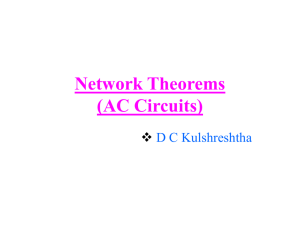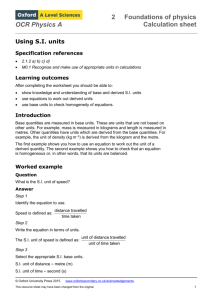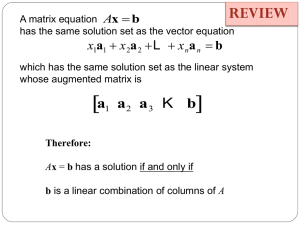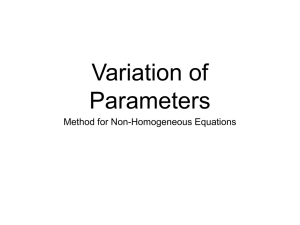#8 Difference Equations
advertisement
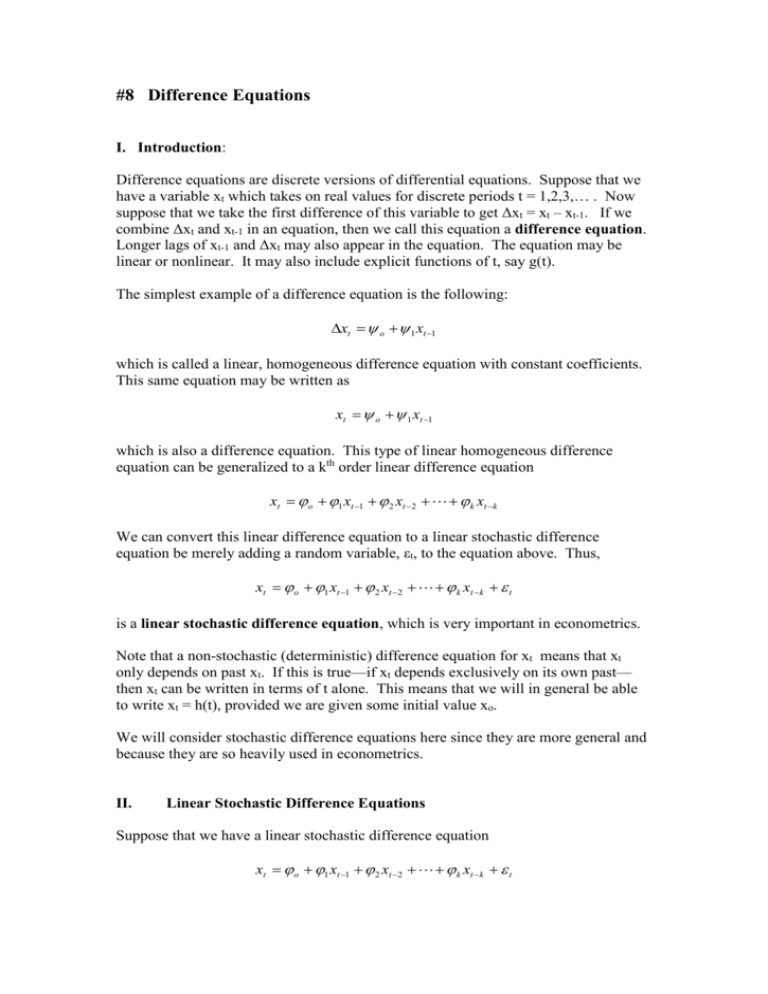
#8 Difference Equations I. Introduction: Difference equations are discrete versions of differential equations. Suppose that we have a variable xt which takes on real values for discrete periods t = 1,2,3,… . Now suppose that we take the first difference of this variable to get Δxt = xt – xt-1. If we combine Δxt and xt-1 in an equation, then we call this equation a difference equation. Longer lags of xt-1 and Δxt may also appear in the equation. The equation may be linear or nonlinear. It may also include explicit functions of t, say g(t). The simplest example of a difference equation is the following: xt o 1 xt 1 which is called a linear, homogeneous difference equation with constant coefficients. This same equation may be written as xt o 1 xt 1 which is also a difference equation. This type of linear homogeneous difference equation can be generalized to a kth order linear difference equation xt o 1 xt 1 2 xt 2 k xt k We can convert this linear difference equation to a linear stochastic difference equation be merely adding a random variable, εt, to the equation above. Thus, xt o 1 xt 1 2 xt 2 k xt k t is a linear stochastic difference equation, which is very important in econometrics. Note that a non-stochastic (deterministic) difference equation for xt means that xt only depends on past xt. If this is true—if xt depends exclusively on its own past— then xt can be written in terms of t alone. This means that we will in general be able to write xt = h(t), provided we are given some initial value xo. We will consider stochastic difference equations here since they are more general and because they are so heavily used in econometrics. II. Linear Stochastic Difference Equations Suppose that we have a linear stochastic difference equation xt o 1 xt 1 2 xt 2 k xt k t where the random variable, εt, is white noise. A white noise random variable satisfies the following properties: (1) E[εt] = 0 for all t (2) Var[εt] = E[εt] = σ2 for all t (3) Cov(εt,εs) = 0 for all s ≠ t The first step in analyzing this difference equation is to solve it. How does one go about “solving” a linear stochastic difference equation? The first step is to realize that xt is composed of two parts (i) the homogeneous solution, x th and (ii) the particular solution, xtp . Thus, we can write xt xth xtp The problem of solving the difference equation xt involves first solving for the homogeneous solution, then solving for the particular solution, and then adding these two solutions together to arrive at the general solution to the difference equation. Step1: Solving for the homogeneous solution – To solve for the homogeneous solution, first eliminate the constant and random parts of the equation. We can write the resulting homogeneous (deterministic) linear difference equation in constant coefficients as xth 1 xth1 2 xth 2 k xth k Note how that the constant φo and the white noise process εt have been eliminated. In addition, the variable xt has become x th . “Homogeneous” means that the left hand side variable depends only on lagged values of itself appearing on the right hand side. We next introduce the lag operator “L” which is defined by Lxt = xt-1 This linear operator is much like the more familiar linear operators of calculus such as d/dx and dx . Using the linear operator L we can write the homogeneous difference equation above as xth (1 1 L 2 L2 k Lk ) 0 . We next substitute z = 1/L into the above equation and recognize that the expression within the parentheses must be identically zero in order to for the equation to hold for all x th . This yields the following equation known as the characteristic equation of the difference equation z k 1 z k 1 2 z k 2 k 0 By the Fundamental Theorem of Algebra, exactly k (possibly complex) roots exist to this equation and these may be written as z1 , z 2 , z 3 ,, z k . Economists are very interested in the case where at least one of these roots equals unity. Such a root is called a unit root. If all of the roots have a modulus less than unity, then the variable xt in the original difference equation is said to be covariance stationary.1 If the roots have a modulus greater than or equal to one, then we say that xt is non-stationary. A non-stationary random variable can be explosive in the sense that its variance expands without limit. Many random variables in economics appear to have this property since they exhibit growth with a widening variance. However, economists still find such variables useful since linear combinations of certain nonstationary variables need not be non-stationary. This is the idea of cointegration. After computing the roots of the characteristic equation, the homogeneous solution can be written 1 The modulus of a complex number a+bi is equal to |(a2+b2)1/2| or the absolute value of the distance from the origin to the point (a,b). If z is real, then b = 0 and the modulus of z is simply |z|, the absolute value of z.


